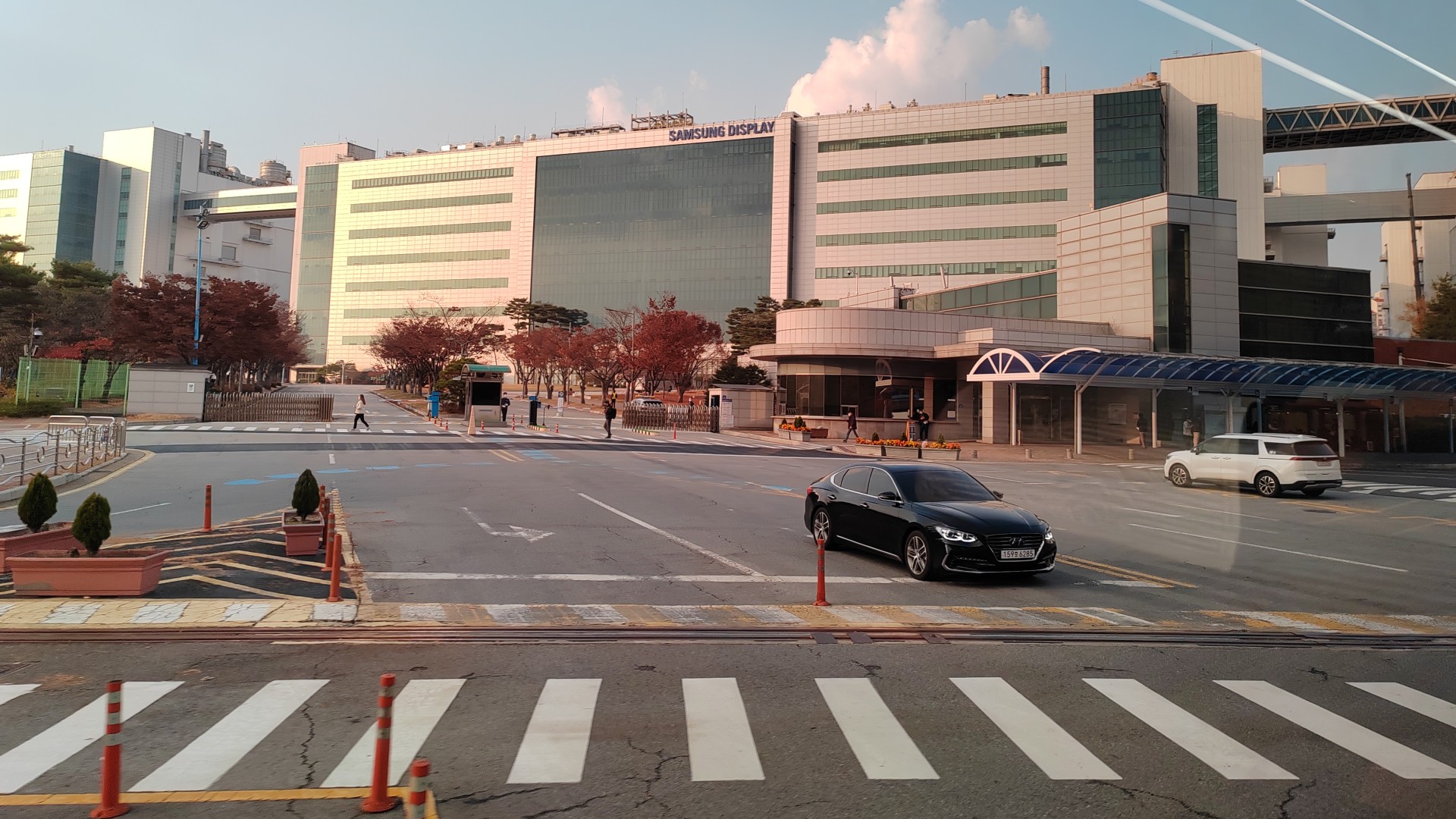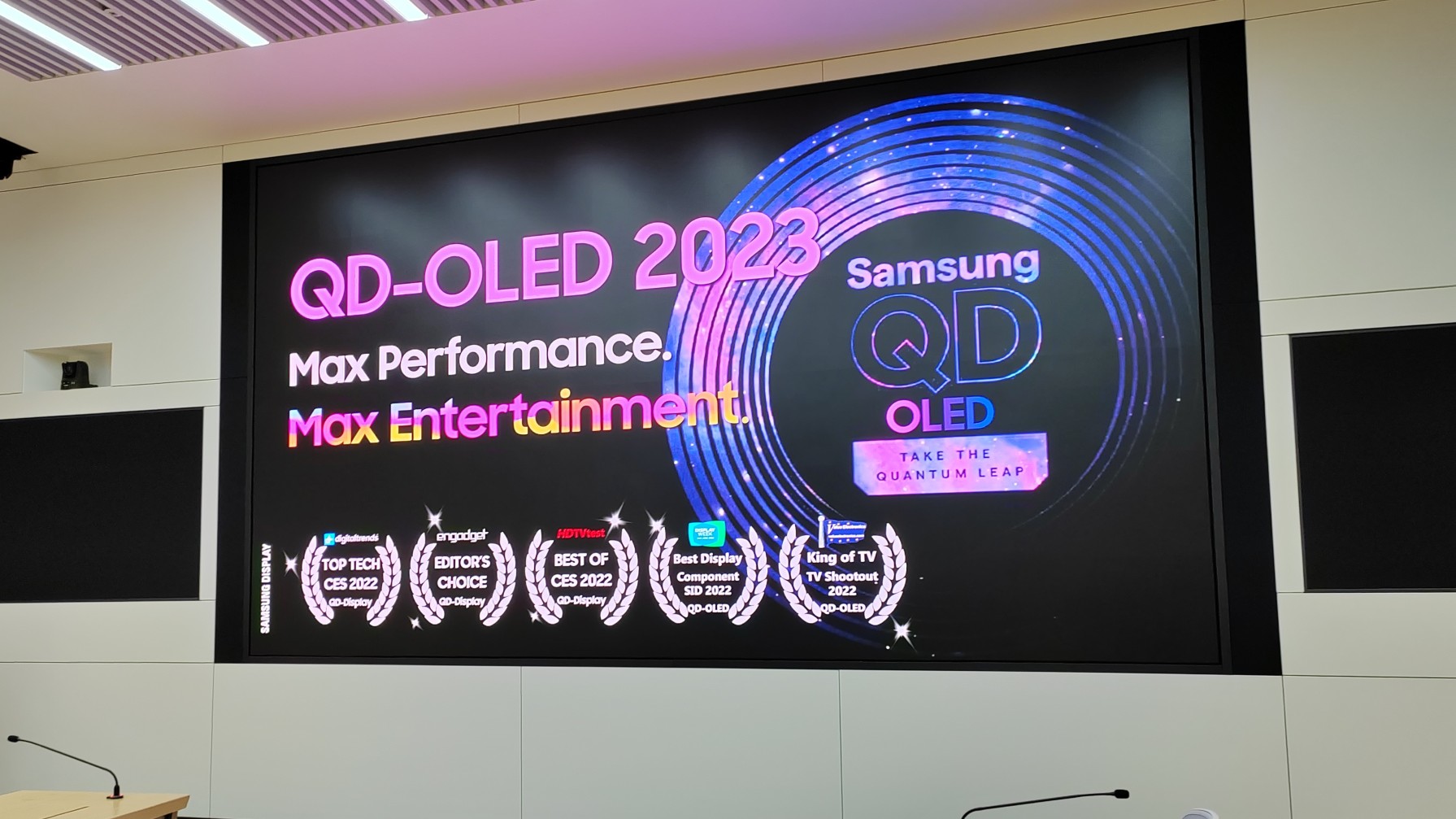I visited Samsung's secretive OLED TV factory, and here's what I learned

Samsung is getting serious about OLED in 2023. “We’ve decided to raise the bar when it comes to QD-OLED,” Chirag Shah, Principal Professional in the Samsung Display Marketing Team, tells me when I arrive at the Samsung Display factory in Giheung-gu, a district in Yongin, South Korea.
The brand’s second-generation QD-OLED displays aren’t just tweaks of the original panel design (used in the class-leading Sony A95K TV, as well as the Samsung S95B), increasing brightness by a few percentage points, he says, but a core upgrade that dramatically improves performance.
To learn more, I’m invited to tour Samsung’s top-secret OLED factory. Given even senior Samsung executives don’t get an invite to tour this panel production line, this is a big deal.
I’m one of the first journalists in the world to visit the facility, and take a deeper dive into the technologies that will shape Samsung’s 2023 QD-OLED line.
In addition to walking the factory floor, Samsung Display is talking candidly about its latest tech.
I’m told the picture boost in 2023 QD-OLED panels has been made possible by two main innovations: a hyper efficient ETL (electron transport layer) and partnering Intellisense AI v2.0, which offers high-precision pixel control.
By making improvements in the material used for the ETL, Samsung Display has been able to increase the resonance of light within the ETL and minimize light absorption, allowing for brighter screens and better black levels.
Sign up for breaking news, reviews, opinion, top tech deals, and more.
To prove the point, Shah has laid on demos that pitch a 65-inch OLED from LG Display (used in the all the best OLED TVs that don't feature QD-OLED) against both a QD-OLED panel from 2022 and a new 2023 QD-OLED panel. Content includes material from the Spears and Munsil UHD HDR benchmark disc.
The aforementioned improvements are immediately apparent. The first-gen QD-OLED was notable for its brightness and color vibrancy, but this year’s model takes that up a level or two, and clearly increases overall dynamic range.
One key trait of QD-OLED is the ability to display more shades of color, for example in sunset gradations. For 2023, these gradations are even more silky smooth and natural.
The new panels also offer less obvious black crush, indicating a smoother lift up from black – one of the few notable potential drawbacks of the old panel.
No peeking allowed
Unsurprisingly, no cameras or recording equipment are allowed on the panel production line. Samsung wants to keep a tight lid on its operation. After the OLED panel shoot-out, I’m led away and duly stripped to my underwear. After being airblasted, I’m dressed in full cleanroom coverall attire, including hood, mask, gloves and boots.

It’s been some time since I’ve toured a factory floor, what with COVID and the high security measures that now routinely protect proprietary consumer electronics manufacturing, so I was expecting to be wowed. But even so, I’m awestruck at just how futuristic the plant is.
To get around, I’m ushered through pristine corridors, dipping low to pass through something like the Jefferies tubes' in Star Trek. Every so often I get to see glass en route from one process to another. Samsung may be late to the OLED party but it’s clearly taking QD-OLED display technology very seriously. Even the factory robots seem impressed.
Stats entertainment
The panel specs for 2023 QD-OLED are formidable. The next gen QD-OLED panels will be 30% brighter, for starters. I’m told the potential maximum screen brightness on 55- and 65-inch QD-OLED screens will rise from 1,500 nits to 2,000 nits.
A conventional white pixel OLED can hit around 1,100 to 1,150 nits using a 3 per cent measurement window using Dynamic mode. 2022 QD-OLED managed 1,490 50 1,500 in the same conditions. For 2023, that will rise to 2,000 nits, and be consistent across all three screen sizes: 55-inch, 65-inch and 77-inch.
Competing, traditional OLED screens improve their luminance with a white boost pixel, which is not a true color luminance uplift, suggests Samsung Display’s Shah. The QD-OLED 30% uplift is a full RGB improvement – each primary luminance color has been increased. So expect extreme color vibrancy.

Using a 10% measurement patch, Samsung says we can expect 1,300 nits, with no detriment to the near-black performance. The screens have been optimized for bright peaks as well as low-level shadow detail.
Paper specs for rival OLED technologies may be comparable, but it’s worth digging a little deeper. LG OLED displays obtain 60% of their bright light output from that white boost pixel.
This may explain why primary colo-rs don’t look quite as vivid as what’s possible from QD-OLED. For 2023, each primary color in a QD-OLED receives a significant boost, which contributes to a perceptually different experience of HDR.
It’s worth pointing out that these measurements are indicative of a raw panel-led performance. In the wild, Samsung screens will come with their own processing and production characteristics, so don’t expect all Samsung QD-OLED screens to perform in exactly the same way. I’d expect a familiar range hierarchy to develop, as the products options widen.
Saving energy
Interestingly, Samsung Display hasn’t implemented any new thermal management technologies, be it physical heat sink or brightness boosting algorithms, to its 2023 panels, to achieve improvements.
I’ll assume this is because Samsung doesn’t want to compromise the ultra-slim aesthetics of its panel, as this opens the door for individual, eye-catching design.
2023 QD-OLED panels will also benefit from reduced power consumption and improved lifetime reliability (said to be twice that of its first-gen QD-OLED). A proprietary Samsung recipe determines just how much of the performance gain is allowed to enhance brightness, how much is allocated to increasing lifespan, and how much allows for power reduction.

The manufacturer maintains the end result will provide visual parity with a Sony HX-310 Reference Master 4K HDR Grading Monitor. “You’ll see exactly the creators intent, whether it’s brightness, range or shadow details,” the company says. Consider my appetite suitably whetted.
Perhaps the biggest change to Samsung's QD OLED offering are the wider panel sizes available this year: 55-, 65- and 77-inches. On the monitor side, Samsung has moved from 34- to 49-inches. It can only be a matter of time before 48-inch QD-OLED TVs join the family.
At the end of my tour, still clad in my ridiculous cleanroom outfit, my picture is snapped. I can’t help feeling this is more for future leverage than a memento.
“QD-OLED will redefine how you experience 4K HDR in 2023,” promises Shah, as I leave to return to Seoul. It's an extremely lofty goal, but he may well be right. Stay tuned for our first impressions and full reviews of Samsung's 2023 TVs as soon as we get time with them.

Steve has been writing about AV and home cinema since the dawn of time, or more accurately, since the glory days of VHS and Betamax. He has strong opinions on the latest TV technology, Hi-Fi and Blu-ray/media players, and likes nothing better than to crank up his ludicrously powerful home theatre system to binge-watch TV shows.